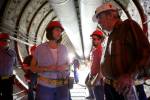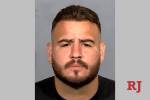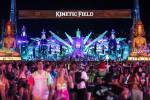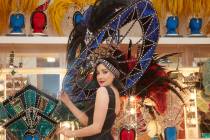Mob Museum speakers celebrate heritage of Las Vegas building
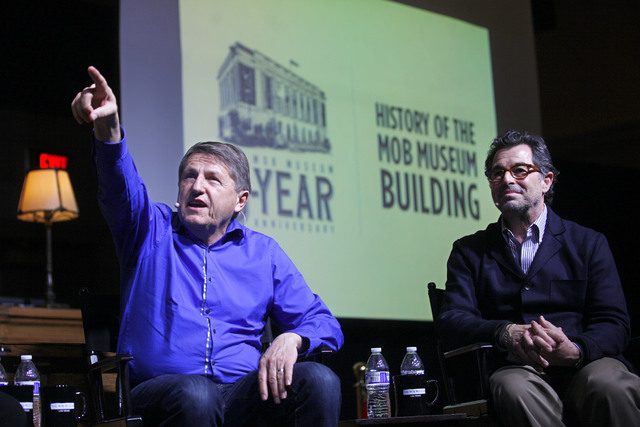









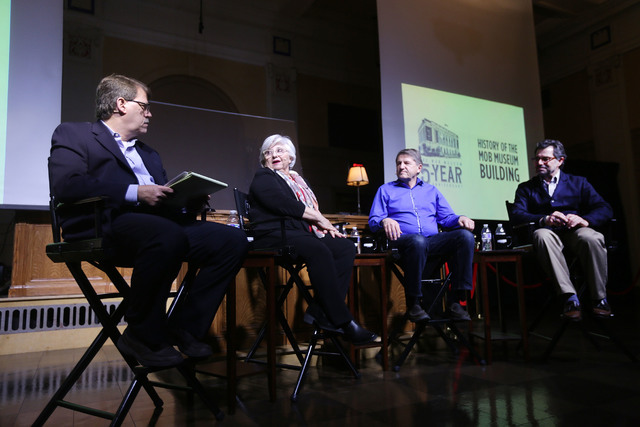
Every picture tells a story, the saying goes. Sometimes, a building can too.
The building that today houses the Mob Museum in downtown Las Vegas tells how the neoclassical edifice helped put the then-young city on the map.
“In Las Vegas, it seems like we implode everything,” said Sam Tolman, architectural project manager for the city of Las Vegas. “This building has a lot of historical merit. It shows the importance of preserving history instead of replacing old buildings with historical character.”
The museum, formally known as the National Museum of Organized Crime and Law Enforcement, is celebrating its fifth anniversary, and to help kick-start the celebration, a panel of speakers, including Tolman, discussed the building’s history Sunday.
Las Vegas got its start in 1905, and by 1929, federal officials knew the town would grow large enough to need a federal building, panelist Robert Chattel said.
Construction began in 1931, and the 41,000-square-foot building was dedicated on Nov. 27, 1933, said Chattel, founder of Chattel Inc., a historic preservation consulting firm that advised on the restoration of the federal building and post office now occupied by the museum.
“Locally, this was a central gathering place for this community in so many different ways, especially early on,” said Geoff Schumacher, the museum’s director of content. “Any federal agency that opened an office in Las Vegas got its start here.”
The courthouse was not used in the early years, as the state’s only federal judge lived more than 400 miles away in Carson City, Chattel said. Instead, judges from Los Angeles and San Francisco traveled to the building twice a year to hear cases until 1945, when Las Vegas got its first full-time appointed judge.
On Nov. 15, 1950, the U.S. Senate Special Committee to Investigate Organized Crime in Interstate Commerce, led by U.S. Sen. Estes Kefauver, sought to expose and control organized crime.
The Kefauver hearings, held in 14 cities, exposed organized crime across America, including Las Vegas.
“With the recent invention of the television, it seemed all eyes were on Las Vegas,” said panelist Nancy Deaner, former director of cultural affairs for the city of Las Vegas.
The building also played an important role in the capture of Richard “Dick” Hickock and Perry Smith, who murdered the Clutter family in Kansas, a crime made famous by Truman Capote in his 1966 nonfiction novel “In Cold Blood.”
The duo arrived there to pick up a box mailed from Mexico containing items they were wearing on the night they murdered the Clutters, Schumacher said.
In 2002, federal officials sold the building to Las Vegas for $1 with the condition that it be preserved and used as a cultural center.
It was an offer the city couldn’t refuse.
Former Las Vegas Mayor Oscar Goodman, who had represented defendants with ties to organized crime as a defense attorney, led the charge to turn it into a museum.
The Mob Museum opened Feb. 14, 2012, the anniversary of the St. Valentine’s Day Massacre of 1929, the name given to the murders of seven members and associates of Bugs Moran’s gang.
Chattel said the building, which is listed on the national and state registers of historic places, is significant for its neoclassical architecture.
The museum stays current on its mission. “Organized crime has not gone away, but the museum continues to tell that story as it applies today,” Deaner said.
Contact Sandy Lopez at slopez@reviewjournal.com or 702-383-4686. Follow @JournalismSandy on Twitter.
RELATED
Goodman’s toast is exaggerated, but Mob Museum’s confidence is not
You can now take a tour of the Mob Museum with a robot
The Mob Museum opens in Las Vegas
Mob Museum proving to be huge hit with tourists



